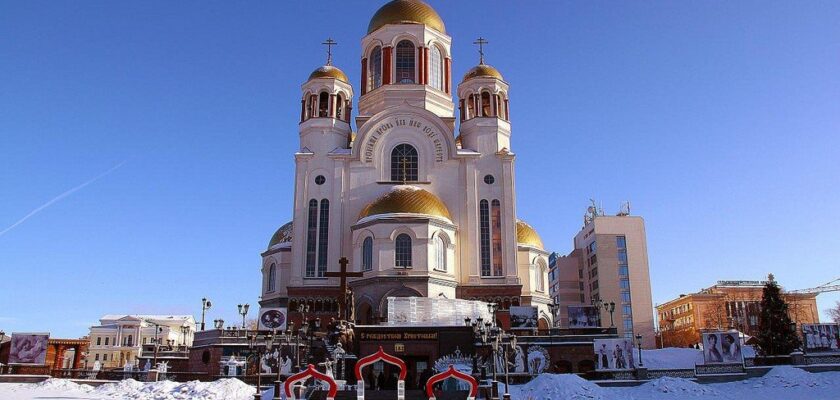Храм-на-Крови
Temple-on-Blood, one of the largest in Yekaterinburg, is a modern monumental religious building that belongs among the most famous sights of the Sverdlovsk region. Its full name is “Temple-Monument on the Blood in the name of All Saints in the Land of the Russian Shining”. This spectacular five-domed building with a height of 60 meters and a total area of 3152 m² stands on the site of the demolished house of Ipatiev, in whose walls two and a half months languished the family of the autocrat Nicholas II and four imperial servants. The temple is built in the Russian-Byzantine style, which was widespread during the reign of the last monarch of the Russian Empire.
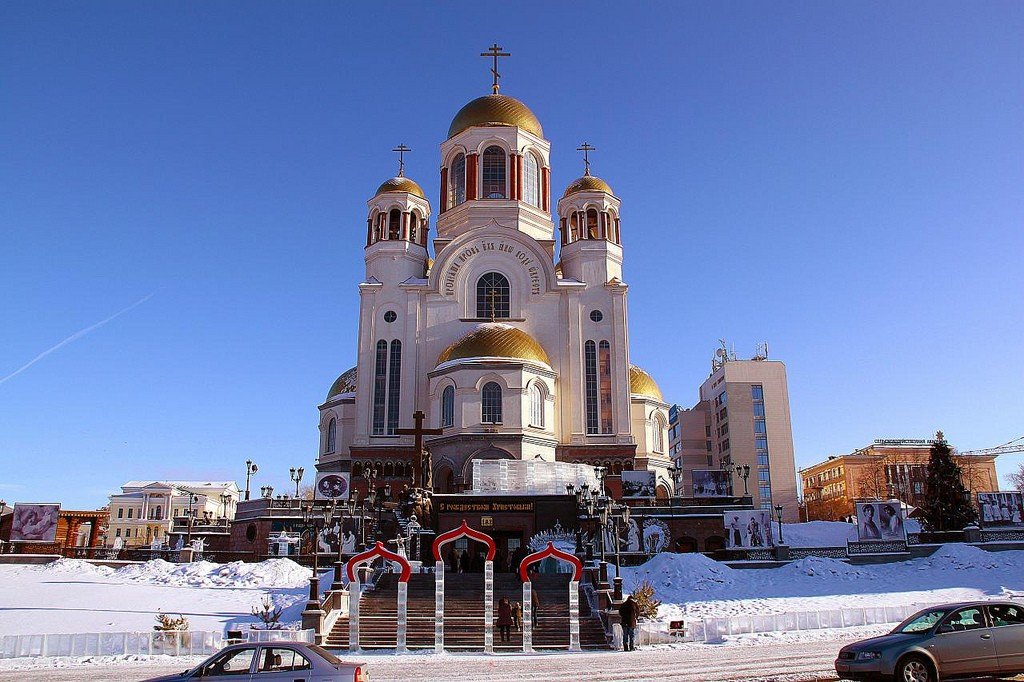
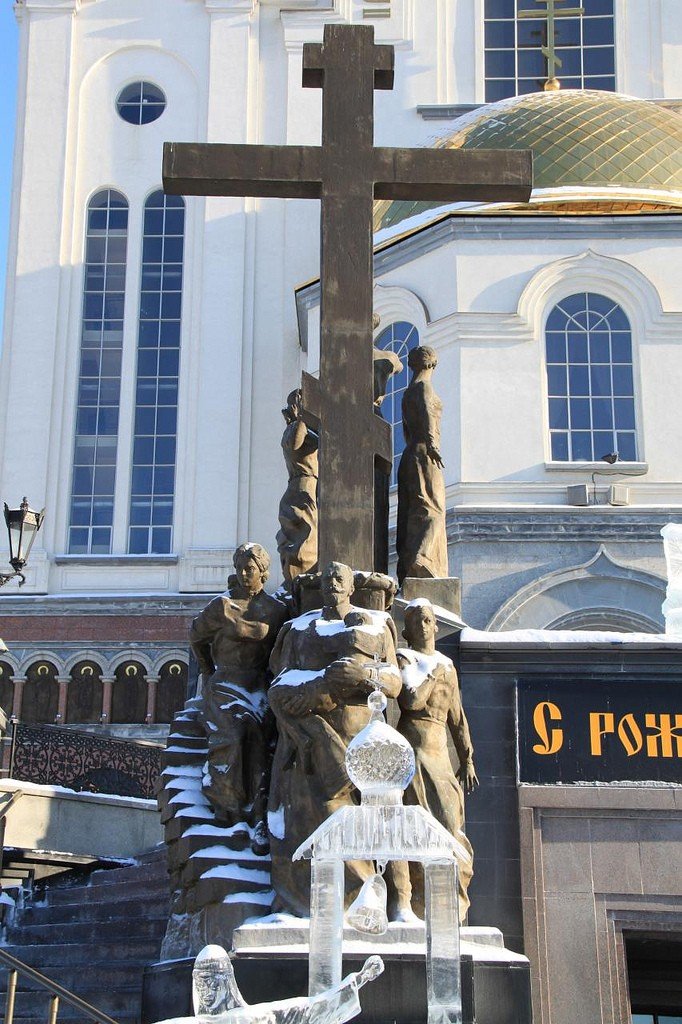

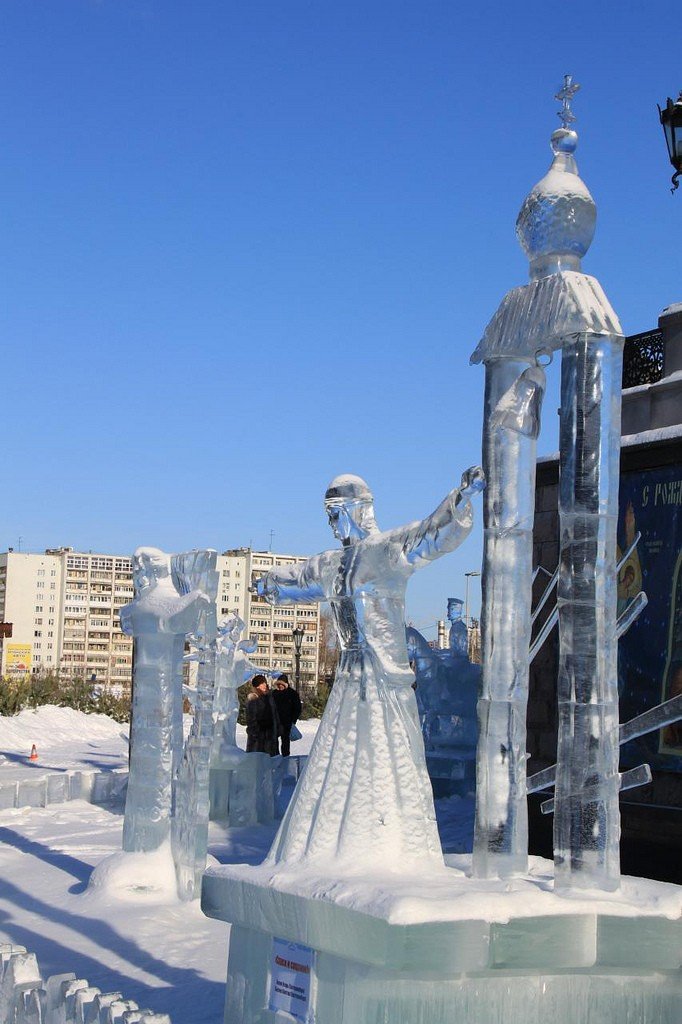
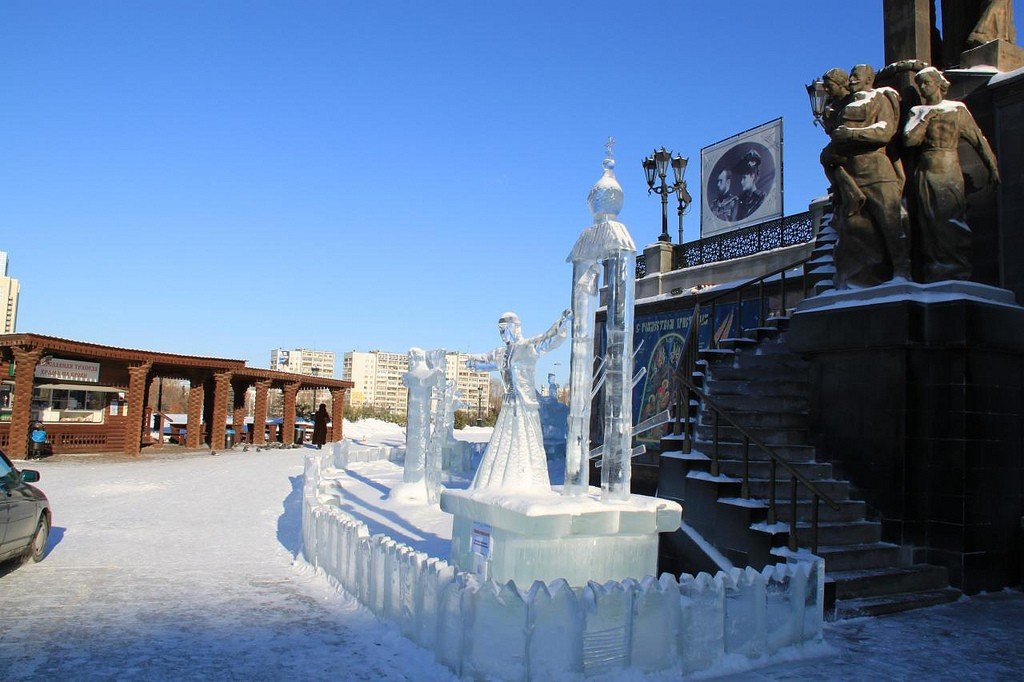
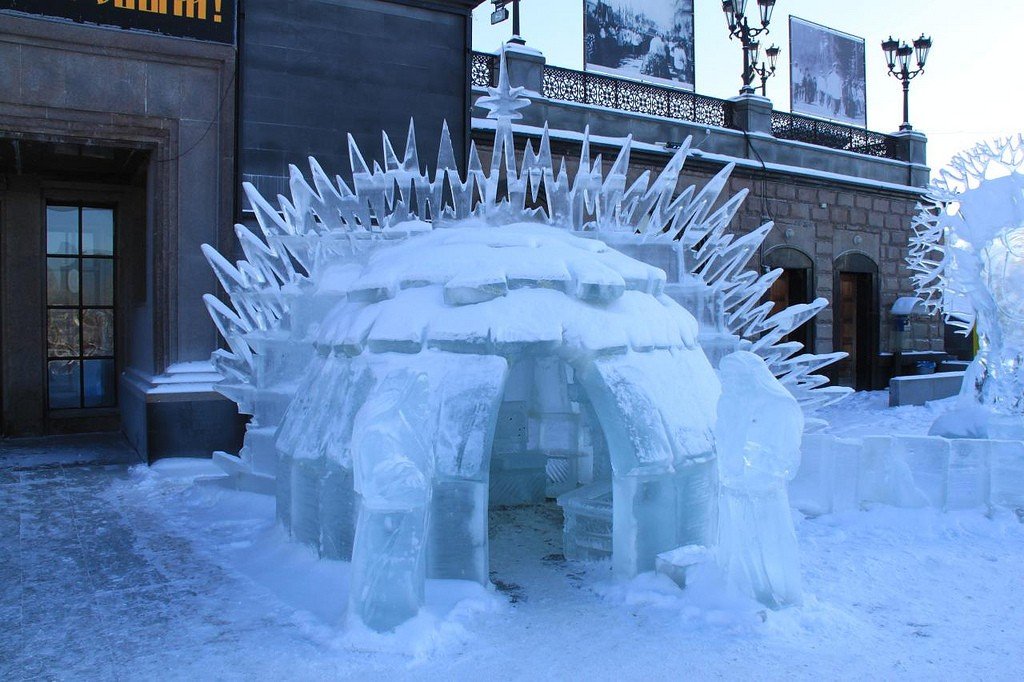
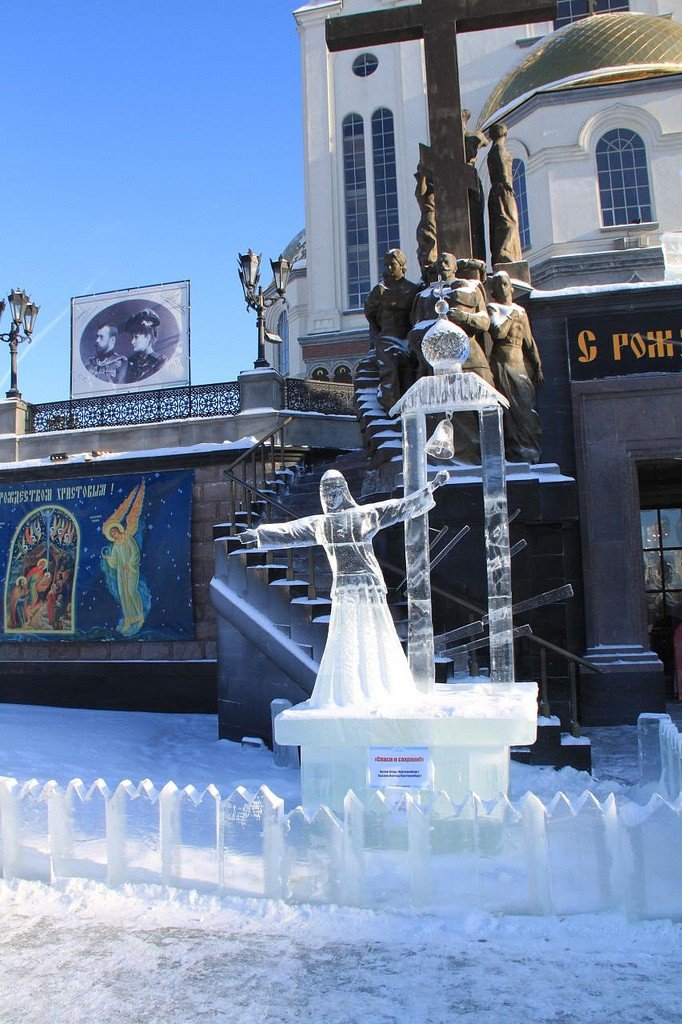
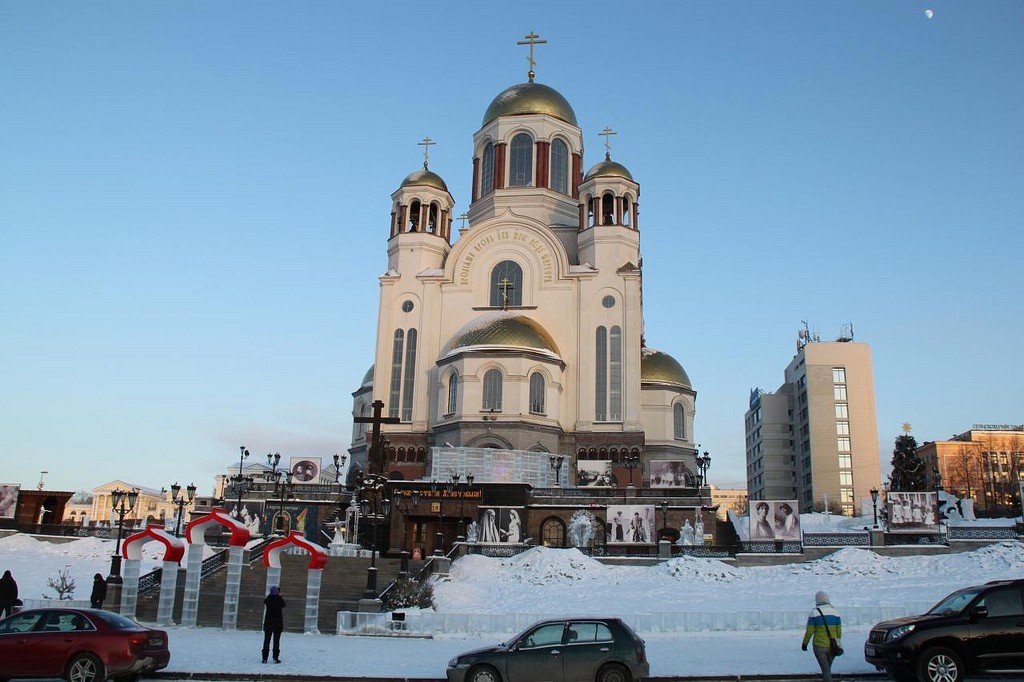
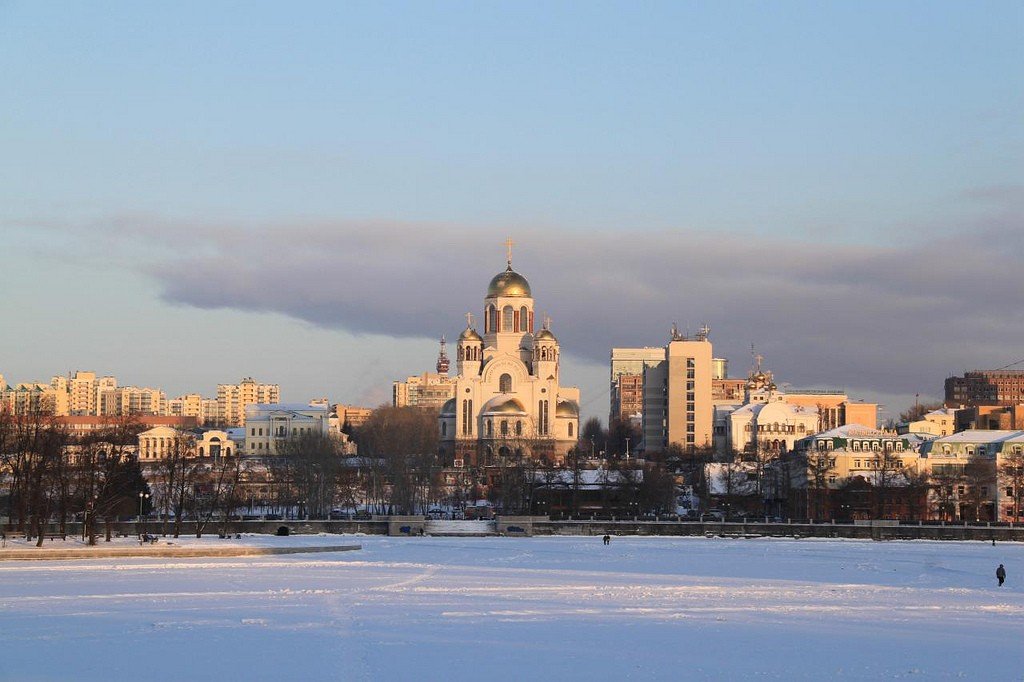
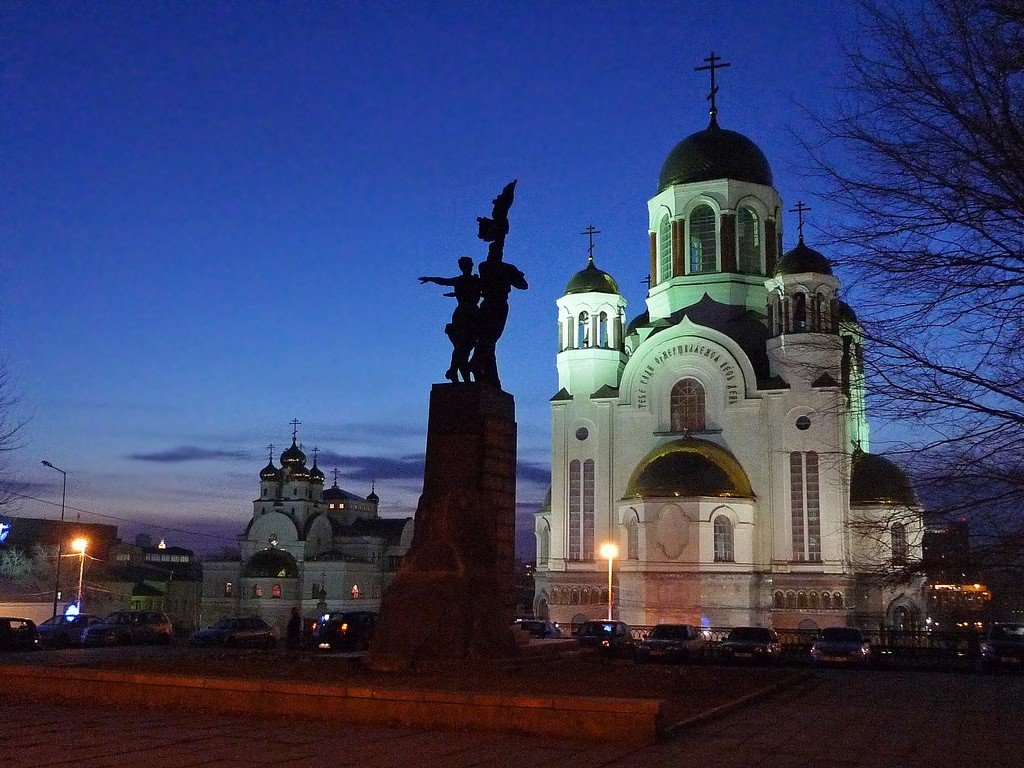
Video: Temple-on-Blood
Contents- Highlights
- History of the Temple-on-Blood
- Architecture and interior of the temple
- Practical information
- How to get there
Highlights
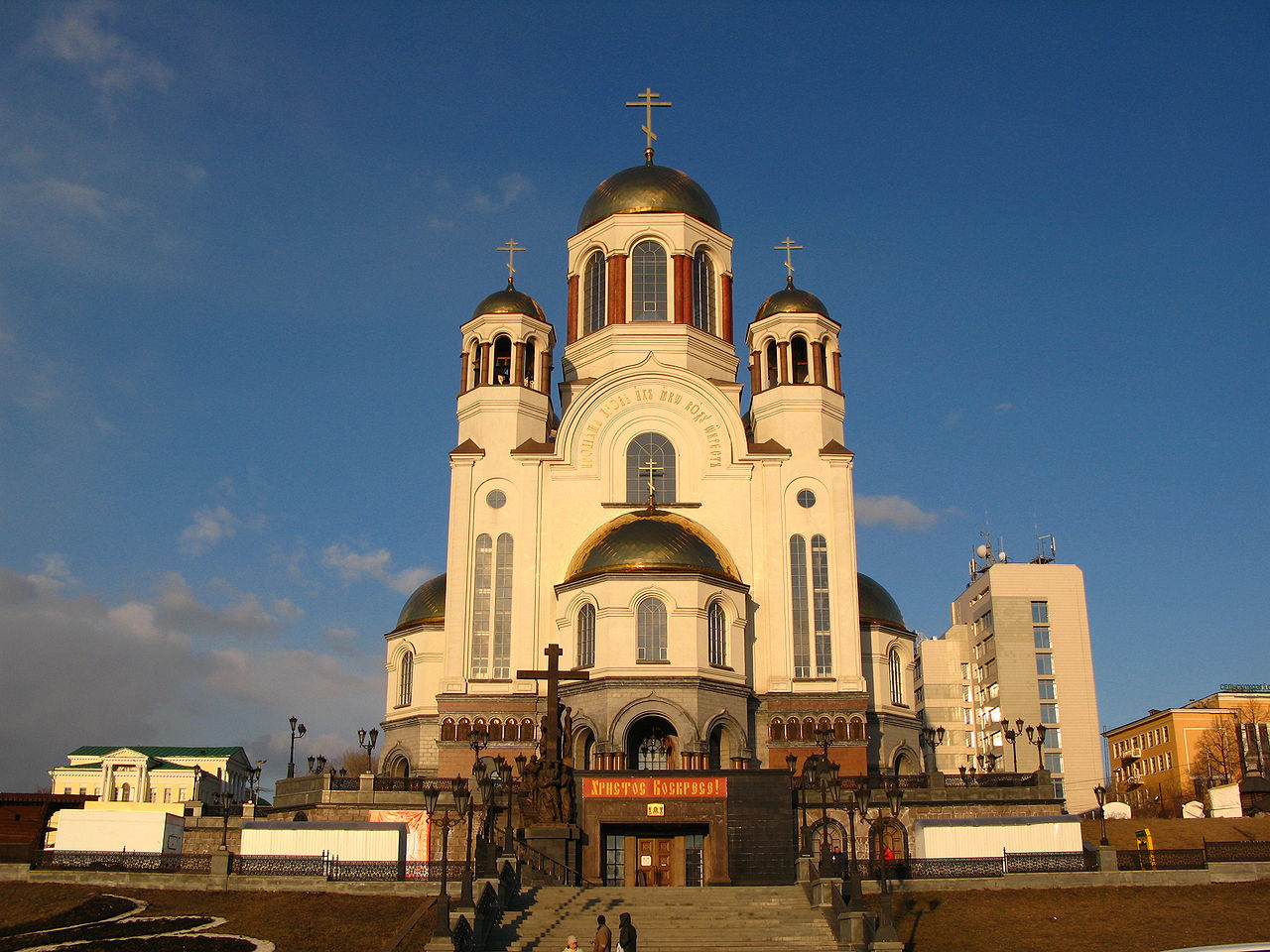
The place where the church stands is now called the Holy Quarter. Here is located the Patriarchal Palace, on the territory of which are the Museum of the Holy Royal Family, the Patriarch’s quarters – here the head of the Russian Orthodox Church stops when he visits Ekaterinburg. The Holy Quarter also houses the wooden chapel of St. Elizabeth and Nun Barbara, the Resurrection Church.
.
Every year on the mournful date of the execution of the royal family, on the night of July 16-17, the All-Night Vigil and Liturgy are held in the Church-on-Blood from 23:30 to 04:00. The service ends with the traditional 25-kilometer march to the Ganina Yama tract where the remains of the dead prisoners were buried. Now on this place is the monastery of the Holy Royal Passion Bearers.
History of the Temple-on-Blood
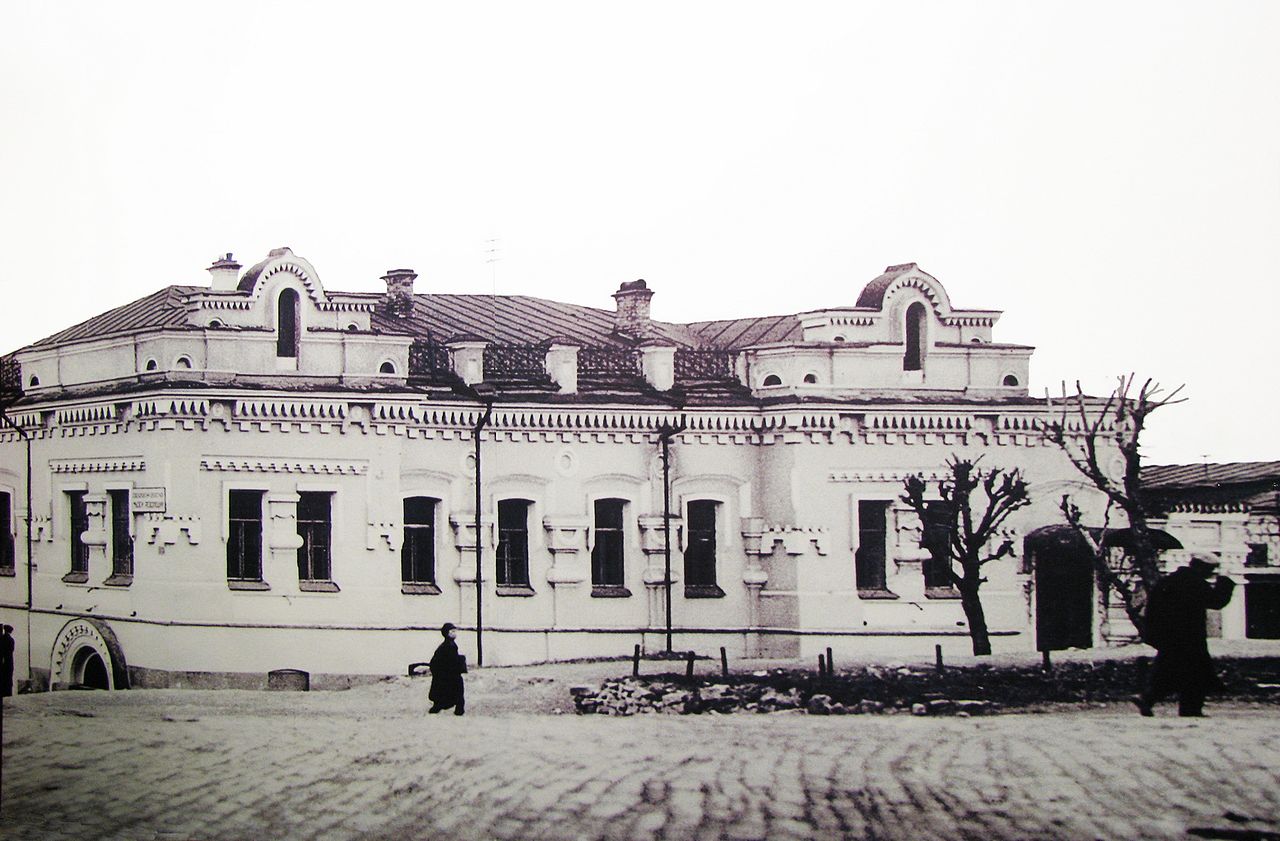
.
Contrary to the hopes of Soviet ideologists, after the demolition of the Ipatiev House pilgrimage to the place where it stood, did not stop, intensified with the beginning of perestroika. In the vacant lot that had been created on the site of the destroyed building, believers, as well as oppositionists and monarchists, gathered more and more frequently. The police dispersed spontaneous gatherings with laziness, more out of inertia. In 1989, believers first prayed openly here, and the following year a wooden cross was erected, which was soon desecrated. Another wooden cross that was cut down had to be replaced with a metal one..https://trevaladvisor.com/img%img/Hram-na-Krovireterte/Peredacha-semi-Romanovykh-Uralsovetu.-KHudozhnik-V.N.-Pchyelin.-1927-g..jpg” alt=””/>%’ Ekaterinburg welcomed Patriarch Alexy II, who placed a capsule with a memorable letter of illumination of the construction site into the foundation of the future temple. A year later the zero construction cycle was completed, and in October 2002 the bell tower was raised. On the belfry of the temple 11 bells were hoisted. The funds for their manufacture were collected by citizens who took part in the “Bells of Repentance” campaign. In May of the following year in Kamensk-Uralsky from a special bell bronze craftsmen cast for the Temple-on-Blood bell weighing 5 tons, which was named in honor of St. Andrew, and soon hoisted on the belfry..On July 16, 2003, the Temple-on-Blood was solemnly consecrated by the highest clergy of the Russian Orthodox Church. The opening of the temple was attended by prominent public figures, philanthropists, church beautifiers, musician Mstislav Rostropovich and his wife Galina Vishnevskaya. The royal dynasty was represented by Grand Duchess Maria Vladimirovna Romanova and Olga Kulikovskaya-Romanova, the widow of Nicholas II’s nephew.
.Architecture and interior of the temple
The authors of the architectural project of the Temple-on-Blood in their work used the plan of the demolished mansion. On it they superimposed sketches, trying to create in the basis of the structure an analog of the room in which the murder took place. The length of the temple approximately coincides with the length of Ipatiev’s house, but the historical place – the “shooting” room – was outside the limits of the modern construction. The memorial temple complex, tall and compact, includes two temples – Upper and Lower, located in the basement. From it stretches an underground passage leading to Komsomolskaya Square, to the Church of the Ascension. Today the passage is laid with bricks.
.The upper temple with high vaults, crowned with five golden domes, according to the authors’ idea, represents the unquenchable lamp, keeping the memory of the tragedy that occurred on a July night in 1918. The entire interior of the temple is flooded with light during the day, thanks to the abundance of windows. Its vaults and walls are painted with the faces of Russian saints, ornaments, scenes from the life of the royal family. This painstaking work was carried out by icon painters of the famous in the Urals workshop of the Vodichevs. The floor and supporting columns of the temple are covered with granite, marble, jasper and other Ural ornamental stones. The decoration of the upper aisle is a luxurious iconostasis, created from a rare breed of white marble, its height is 13 meters and length is almost 30 meters.
.
The main relics of the Church-on-Blood are the carcass of St. Seraphim of Sarov and the icon of the Mother of God “Troeruchitsa”, before which the terror-stricken prisoners prayed in the last months of their lives. The icon miraculously survived thanks to a White Guard officer who, after the brief liberation of Ekaterinburg from the Bolsheviks, found it on the floor of the upper floor of the Ipatiev House. He gave the icon to the Dowager Empress Maria Feodorovna, and a generation later the relic ended up in the possession of Nicholas II’s nephew, Tikhon Kulikovsky-Romanov, who lived in Canada. When the keeper of the icon was gone, his widow Olga, according to her will, gave the family relic to the Church on Blood. The icon, which traveled almost all over the world, and finally returned home, was met by tens of thousands of people in Ekaterinburg..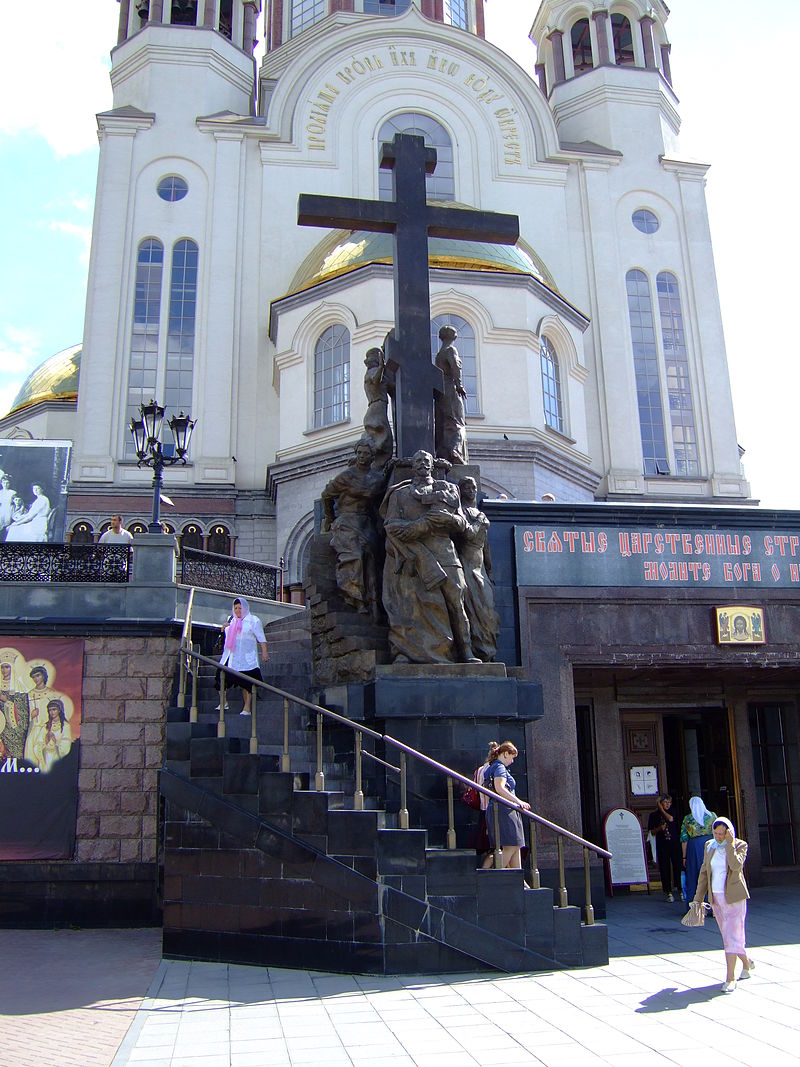
The lower temple, in contrast to the upper one, is austere, gloomy, with low vaults. Here is installed iconostasis, created from faience elements. In a separate crypt is outlined a symbolic “execution” room, where you can see a few surviving structures from the Ipatiev house. The crypt is also visible from the Upper church through a specially made opening. In the lower aisle is a small museum, where exhibits are presented – silent witnesses of the last months of the Romanovs’ life.
.
Embodying darkness and light contrast in the design of the interiors of the lower and upper aisles is preserved in the external appearance of the Temple-on-Blood. Its white stone walls seem to grow out of the 9-meter base, which is covered with red-burgundy granite. The same color, reminding of the spilled blood, marks the pillars under the domes. On the perimeter of the facade there are 48 bronze icons with the faces of the most revered saints in Russian Orthodoxy. The texts of quotations from the Psalter, placed on the facade, are cast in bronze.
.At the portal leading to the Lower Temple, entrants are greeted by the sculptural composition “The Royal Passion-Bearers a few minutes before the execution”. The seven figures at the high cross are depicted before the descent into the basement room, at the moment of premonition of their demise. These impressive statues individually display traits of fright and anguish, anxiety and humility, or rebellious pride. The monument is flanked by a spiral staircase leading from the Upper Temple to the Lower Temple.
.Practical information
The doors of the Temple-on-Blood are open any day of the week from 07:30 to 23:00. On weekdays services are held at 08:00 and 17:00, on Sunday mornings there are three Divine Liturgies.
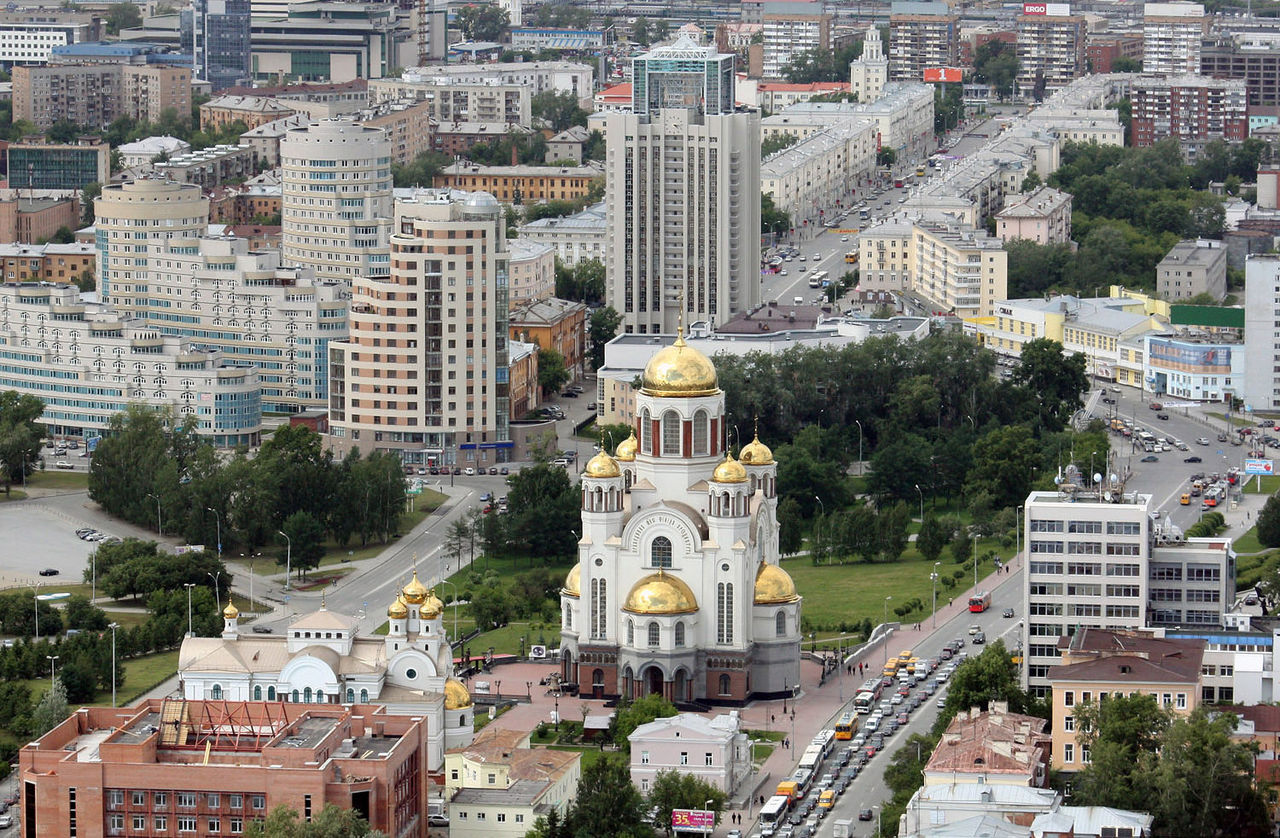
In the lower aisle there are shops where you can buy church utensils, candles, souvenirs with the image of the royal family. At the entrance to the temple in a special box folded handkerchiefs – women should cover their heads before entering.
.
At Christmas near the temple there is a competition of ice sculptures, a Christmas tree and an ice slide for children.
.The nearest culinary establishments to the temple are the family restaurant “Pashtet” (23 Tolmacheva St.), Russian cuisine restaurant “Stolle” (7-A Gorky St.), Bukovski Grill and Asian cuisine restaurant MOMO, located on Karl Libknecht Street.
.How to get there
The Temple-on-Blood is located at 34 Tolmacheva Street (or Svyatoy Kvartal, 1). You can enter from the side of Tsarskaya Street. Next to the temple runs the busy Karl Libknecht Street, where there are public transportation stops, the nearest one is “TUZ”. Here stop buses № 13, 15, 48, 57, minibuses № 1, 21, 23, 53, trolleybuses № 1, 3, 5, 5, 9, 11, 15, 17, 18.
.The nearest metro station is “Dinamo”, it is 750 m away from the temple (pass through the square at the “Cosmos” concert theater).
.